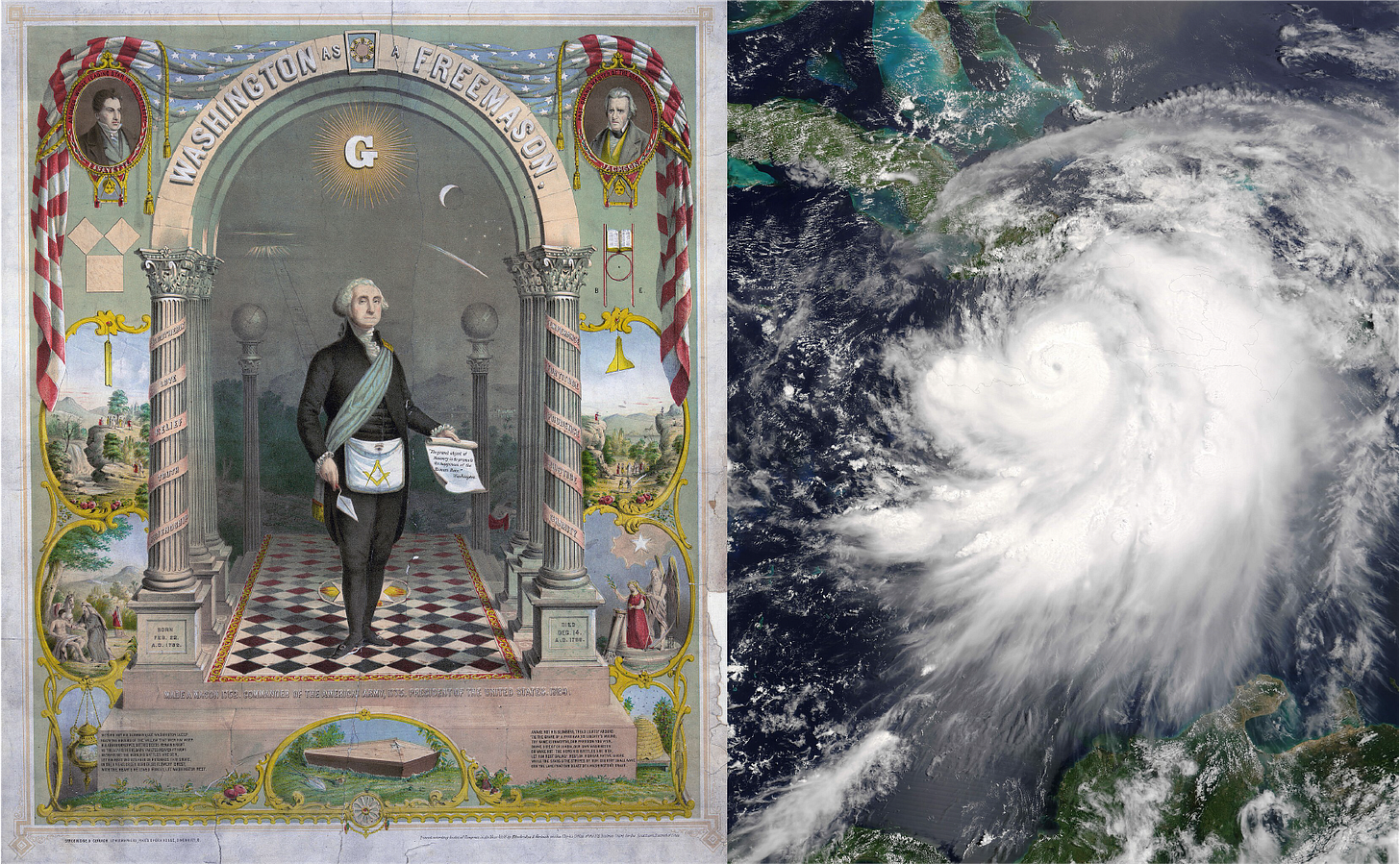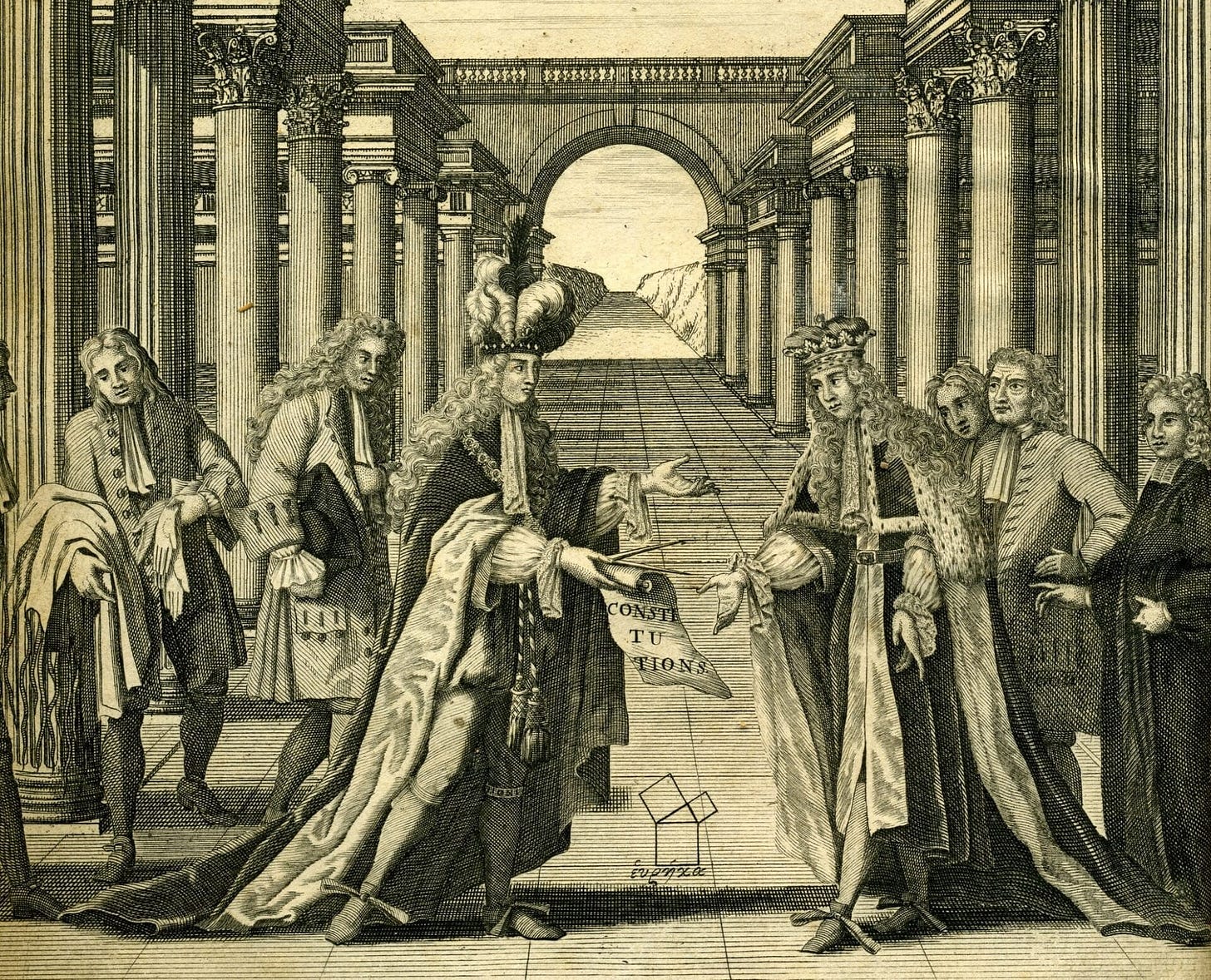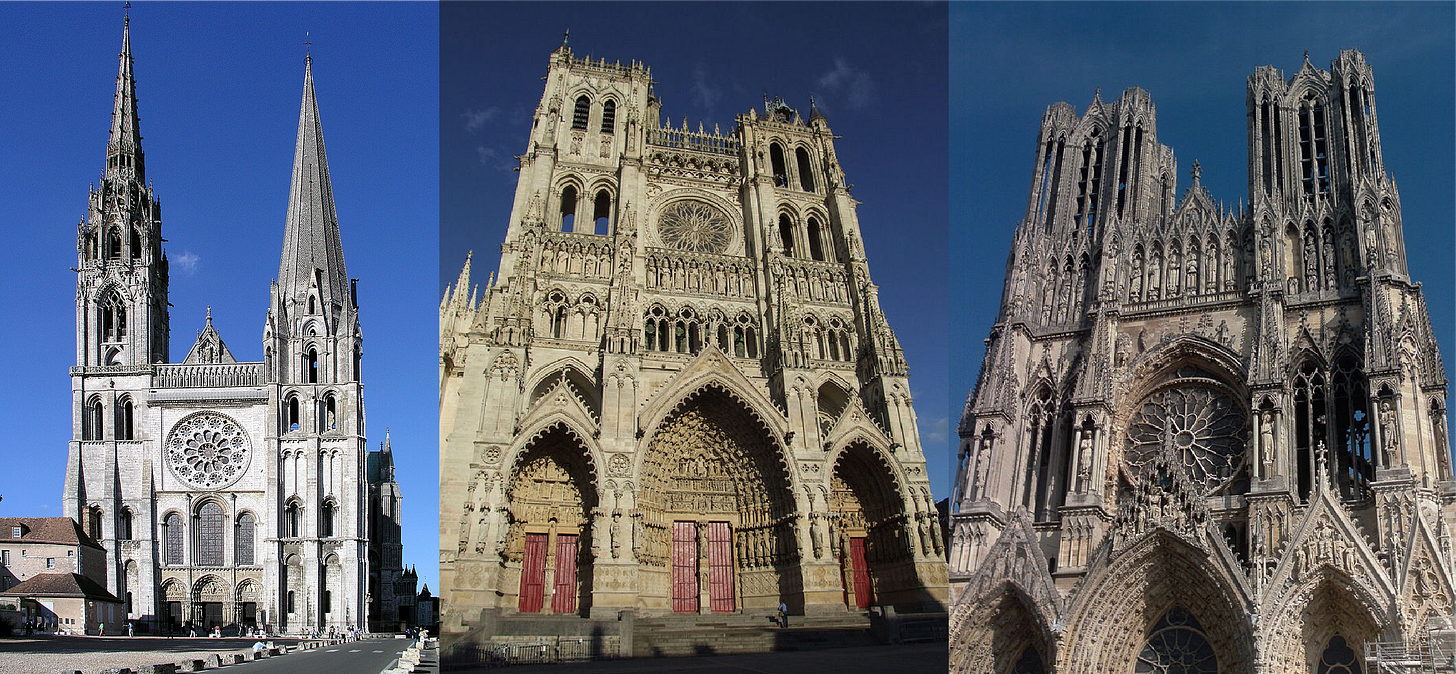The Strange Origins of Freemasonry
How climate change shaped the masons
Freemasonry, one of the world’s oldest and largest fraternal organizations, has long fascinated people with its secretive rituals, symbolic teachings, and historical significance. The organization’s discreet methods and powerful members leave many questions.
To most people, mention of Freemasonry conjures up images of conspiracy and smoke-filled rooms. Fourteen US presidents have been Freemasons. Loads of actors, high-ranking military members, businessmen, and even athletes have taken part in the Craft. Surely they can’t all be in on something, right?
Though Freemasonry is often accused of world-domination and shadowy schemes, even this highly influential organization has been subject to greater forces throughout its history. Mother Nature herself has played a pivotal role in the Craft’s development.
Let’s explore the origins of Freemasonry and specifically how climatic shifts played a pivotal role in shaping the organization.
And as we travel back in time, the smoke-filled room may just clear…
Reminder: you can get tons of useful members-only content and support our mission for a few dollars per month 👇
Two new, full-length articles every single week
Access the entire archive of useful knowledge that built the West
Get actionable principles from history to help navigate modernity
Support independent, educational content that reaches millions
Origins in Operative Masonry
In medieval Europe, stonemasons were among the most skilled craftsmen, responsible for constructing the grand cathedrals, castles, and fortifications that defined the era’s architectural landscape.
These operative masons organized themselves into guilds, also known as lodges. Lodges served multiple purposes: protecting trade secrets, regulating the profession, providing education and training to apprentices. They also offered mutual support to members.
The work of operative masons required advanced knowledge of geometry, engineering, and design, as they crafted intricate stone structures with precision. To safeguard their expertise and ensure only qualified members could practice the trade, masons developed secret signs, passwords, and rituals to identify themselves. These practices, rooted in the need for professional security, later became central to the symbolic rituals of Freemasonry.
One of the earliest known documents related to these guilds is the Regius Manuscript (also known as the Halliwell Manuscript), dated to around 1390. This 794-verse poem, written in Middle English, outlines the moral duties and regulations for stonemasons, emphasizing the importance of geometry — considered the cornerstone of their craft — and ethical conduct.
The manuscript traces the history of masonry back to Euclid in ancient Egypt, reflecting the mythological origins that Freemasons have embraced. It also includes rules for behavior, such as attending church and treating apprentices fairly, providing a glimpse into the values of medieval mason guilds.
The Golden Age of Cathedral Building
The period from approximately 950 to 1250 AD, known as the “Medieval Warm Period”, was a time of relatively temperate and stable climate conditions in Europe. This climatic boon led to increased agricultural productivity, population growth, and economic prosperity. With abundant harvests and growing wealth, European societies could invest in ambitious architectural projects like the construction of Gothic cathedrals.
Cathedrals such as Chartres Cathedral (construction began in 1194), Amiens Cathedral (1220), and Reims Cathedral (1211) were built during this period, showcasing the pinnacle of medieval engineering and artistry.
These structures, with their soaring spires, intricate stonework, and expansive stained-glass windows, required a large workforce of operative masons. The guilds thrived, training the next generation of apprentices in the complex skills needed to construct these projects.
The prosperity of the Medieval Warm Period provided the financial resources and social stability necessary for such monumental endeavors. Cathedrals served not only as places of worship, but as symbols of civic pride and religious devotion as well, drawing pilgrims and fostering community identity. The demand for skilled masons was high, and their guilds became influential institutions, fostering a sense of camaraderie and shared purpose among members.
But the good times wouldn’t last, and medieval Europe would be forever changed…
Keep reading with a 7-day free trial
Subscribe to Atlas Press to keep reading this post and get 7 days of free access to the full post archives.






